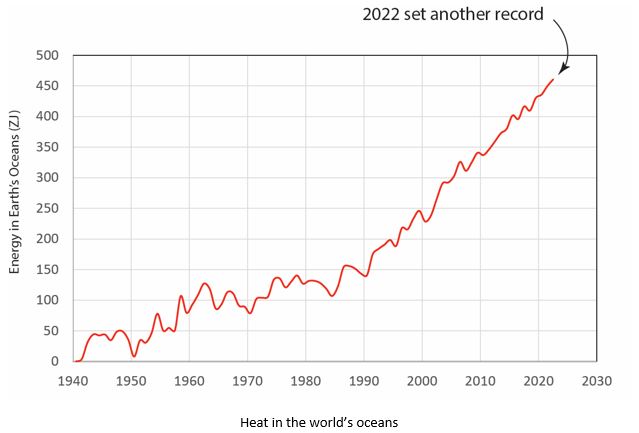By John Abraham, Professor of Thermal Sciences, University of St. Thomas
I am a climate scientist – if you could see the measurements we are making all across this globe, you would be as concerned as I am. But you would also be optimistic about the future. My main job as a climate scientist is to make measurements of planet Earth. The measurements my research team makes are in the world’s oceans. We look to the oceans to determine what will happen to our planet because the oceans cover the majority of planet Earth (70% of the surface) and the oceans are the most important energy component. In fact, as humans emit greenhouse gases into the atmosphere and as the Earth subsequently warms, the vast majority of that heat (more than 90%), ends up in the oceans. I like to say “global warming is really ocean warming.”
The above image shows the heat measurements in the oceans, back to 1940. We measure ocean heat in a strange unit (zettajoules) which is a 1 with 21 zeros after it. So, compared to 1940, the world’s oceans have about 460,000,000,000,000,000,000,000 Joules of heat.
How do we maintain optimism? The reason I am optimistic is because there have been tremendous advances in the production of clean energy. In fact, the cost of wind and solar power is now on par or less expensive than fossil fuels. I travel to the developing world to work on power and water projects. But with some hard work we [the USA] can become a supplier of energy equipment, and help the world simultaneously solve the energy problem while creating high-skilled jobs. It is a potential win-win situation that no rational person can be against.
LOOK to the OCEANS for WHAT HAPPENED. LOOK to OURSELVES for OPTIMISM!
2023-01-17